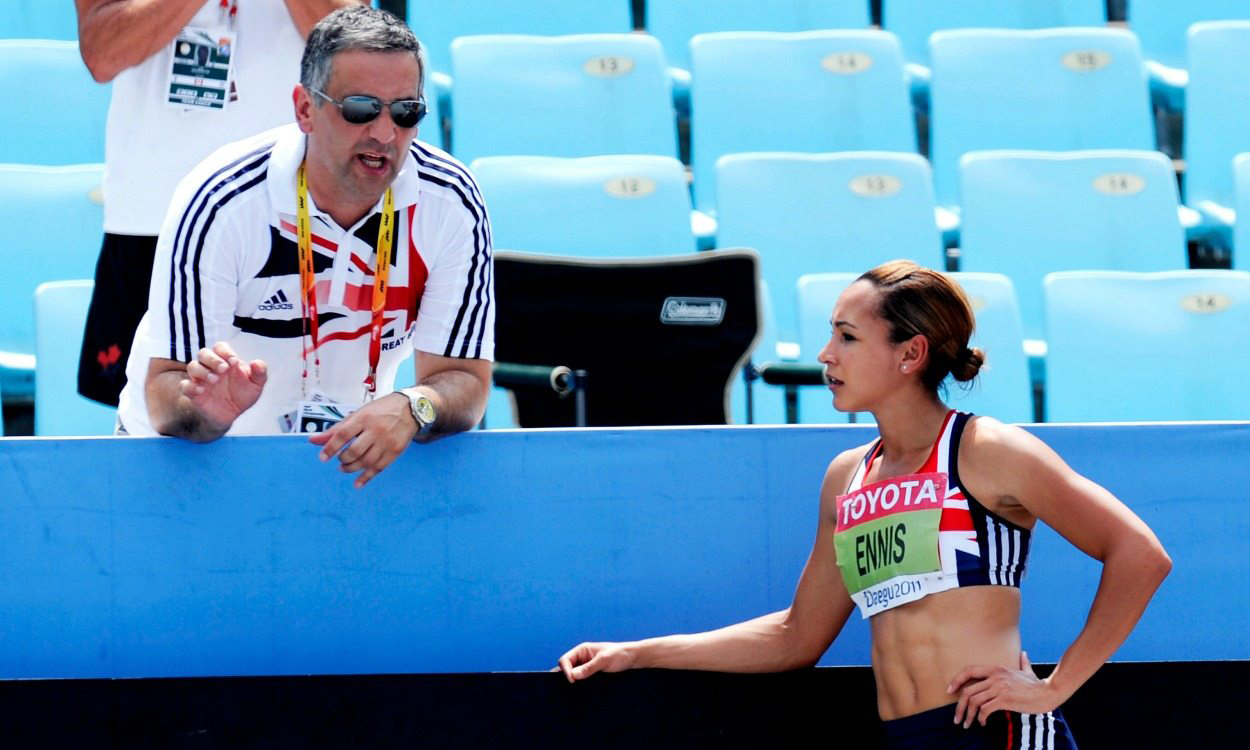Why strength training will make you a better runner
3 years ago
Running3 years ago
Running
If you want to improve your running pace and performance, you can’t just rely on running alone, as Toni Minichiello, Jessica Ennis-Hill’s coach, explains…
For years now, runners have been told that in order to improve their running pace and performance they need to get out there and pound the pavements.
Long runs. Hill runs. Interval runs. Steady runs. Tempo runs. You name it. The perceived wisdom was that the more time you spend simply running, the better you will get at running.
It makes sense on paper, but the reality is that if you just focus on running, you can only reach a certain plateau of performance, and you actually open yourself up to injuries.
If you want to get faster, stronger and more efficient, you need to add strength training into your routine. “It’s basic physics,” says super-coach Toni Minichiello (Jess Ennis-Hill’s coach for 18 years). “The stronger you are, the harder you can hit the ground, the harder you can propel yourself, the more power you have and the faster you can go.”
“The big concern amongst runners is that doing strength training will mean you end up like Arnold Schwarzenegger,” continues Toni. “But the reality is that the right strength training at the right intensities is more likely to make you leaner and faster than bodybuilder bulky.”
According to Toni, “you need to think of your strength training in the same way you would your interval running training, so sets, short recoveries and duration stuff. That way, you reap the strength training rewards and you don’t bulk up.”
“Strength work gives runners a triple whammy positive effect,” says Toni. “It prevents injuries by strengthening muscles and connective tissues; it encourages better posture and efficiency, which means you reduce the likelihood of injuries and can run faster for longer; and it improves your ability to propel yourself forward, which ups your pace.
“So it’s three benefits for the price of one.”
It's basic physics: the stronger you are, the harder you can hit the ground, the harder you can propel yourself, the more power you have and the faster you can go
When it comes to quantifying just how much of an improvement strength training makes to runners, we’ve looked at a 2018 review of a range of studies, which found that two or three strength training sessions a week improved speed and sprint times for middle-distance runners who run between 800m and 3km, and longer-distance runners, running at least 5k.
The report found that runners’ speed improved by 3-5% when running 1500m to 3000m distances. And they were able to run 2-4% faster in 5k to 10k distances.
Anecdotally, Toni has seen stratospheric improvements in running performance after introducing strength training into his athlete’s routines. “Take Ennis [his nickname for Jess], once we added in strength and conditioning work on top of her 800m tempo training sessions, the results were game-changing.”
“To see definite running and pace improvements, strength training twice a week is good, but three times a week is great,” says Toni.
Feeling daunted by the prospect of adding more sessions into your already busy schedule? The good news is that the sessions Toni suggests are just 10 to 20 minutes long. That’s it.
“To make it simple, my suggestion would be to tag them on to the end of your running sessions, which is what we used to do with Jess. That way it doesn’t feel like too much extra work.
“A good way to think about it is to look at your session as one long session, but with 4 important parts…” These are:
1) Dynamic warm-up – 5-10 mins
2) Your run session – whether that’s light, medium or long
3) A strength session – 10-20 mins (remember: you only need to add this 2-3 times a week and the best time is after your light and medium sessions)
4) Static stretches
“When you are strength training as a runner, it's important to ensure you don’t over-stack your muscles. So while a bodybuilder might do a handful of reps of a really heavy weight focusing on one body part to see hypertrophy (an increase in overall muscle size), for a runner aim to do 12 to 15 reps of each exercise at roughly 30% effort,” explains Toni.
“The idea is to ensure you don’t isolate one body part in the way a bodybuilder might. Instead, when you are doing your strength training, do something for calves, squat, adductors, upper body, sit-ups.
“If you do general all-over body, it stops you getting big but it strengthens the parts of the body that are beneficial to running strength.”
To see definite running and pace improvements, strength training twice a week is good, but three times a week is great
The good news is that you don’t need a fully-equipped home gym and weights of every size and style to incorporate strength training into your sessions. Instead, some carefully curated bodyweight exercises that provide all-over strength training will help you get those training gains that you’re after.
“Jess has created lots of great circuits in Jennis that help you add that all-important, all-over strength work into your schedule,” says Toni. “So for example there are body weight HIIT sessions, with moves like press-ups, squats, sit-ups and planks.
“There are also shorter sessions using smaller bits of kit, so dumbbell, medicine ball and kettle bell sessions – all of which add a bit of extra stress to the right muscles to help you run faster. These are all either 10 or 20 minutes long, with just this extra addition of time giving most runners enormous benefits.”
It might sound strange to focus on your core when it’s your arms and legs that are doing all the moving, but when you run, your abs are needed to keep you solid and stable as you hit the ground. The stronger your abs, the less stabilisation that’s required – and the more efficient you are as a runner.
“You see it in runners all the time,” says Toni. “When you get tired and you have been running for 5 or 6 miles, people start to hunch over, scooting along, not picking their feet up and not running efficiently.
“That’s where the core strength training comes in. To run efficiently, your pelvis needs to be upright. You need to be perpendicular, so the strength training will help you maintain a decent posture when you run so that you can run efficiently.
“The goal is really to try to achieve good posture so that you are running efficiently and can run quicker or cover the distance more economically, which can lead to a better time.”
Want to improve your strength as a runner? Then check out the HIIT and strength training sessions in the Jennis programmes…
 Cycle syncing
Cycle syncing Perimenopause
Perimenopause Perimenopause
Perimenopause Perimenopause
PerimenopauseSign up to learn everything you need to know about CycleMapping, plus how you can live better and feel better through optimising your fitness to you.
This website uses cookies to ensure you get the best experience on our website. Learn more

Sign up for the very latest news on women's fitness, health and hormones, plus be the first to receive exclusive offers and extras